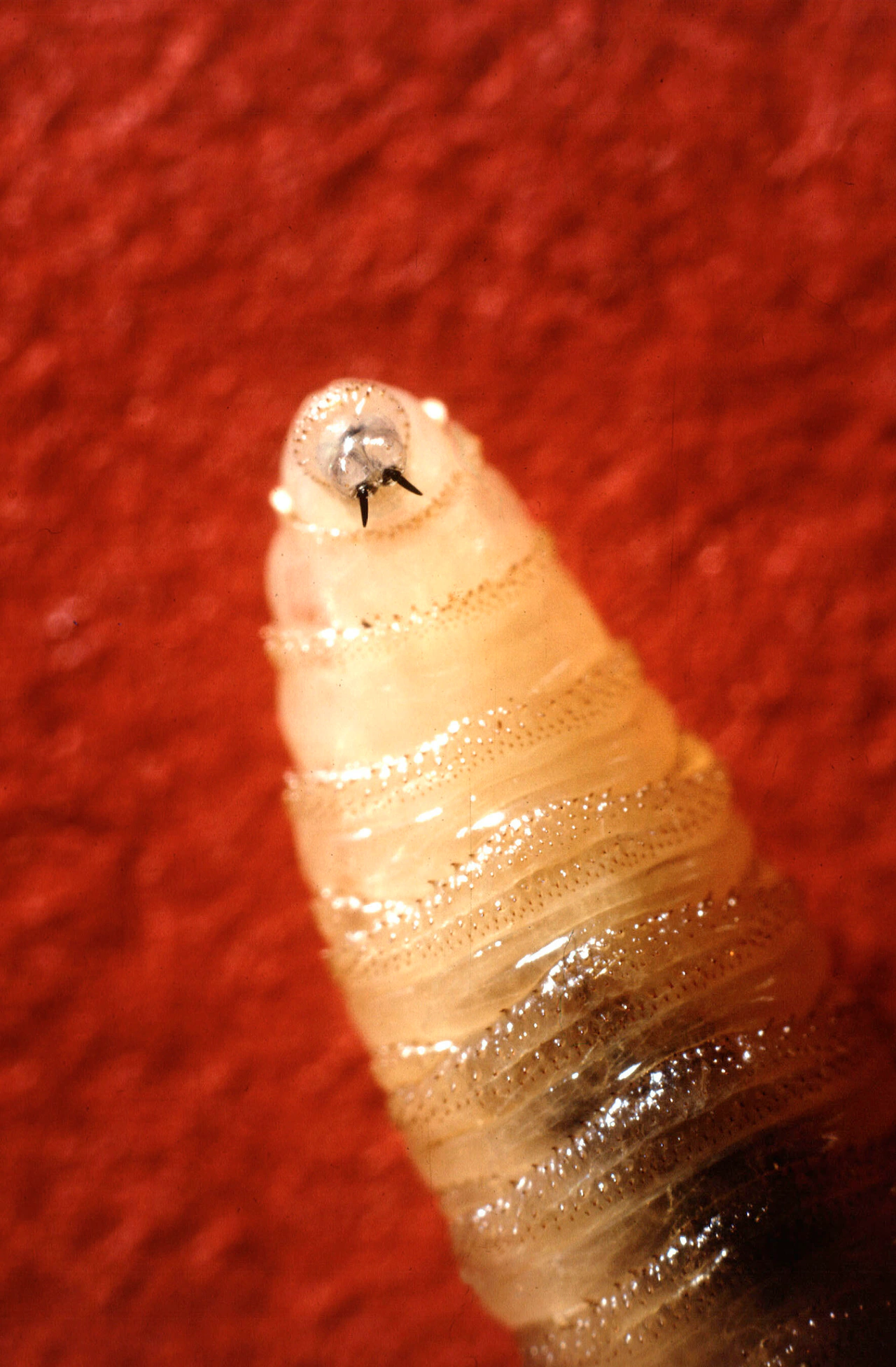
Less than a month after the first U.S. case of New World Screwworm was reported in a patient who had recently traveled out of the country, Mexico has now confirmed a case of the flesh-eating parasite in livestock living close to the U.S border, the U.S. Department of Agriculture said.
Mexico confirmed a case of New World screwworm in Sabinas Hidalgo, located in Nuevo León state, which is less than 70 miles from the U.S.-Mexico border. This finding – released late Sunday night – represents the northernmost detection of the parasitic pest during the current outbreak.
New World screwworm maggots are laid by parasitic flies. They infest livestock and other warm-blooded animals, including people, typically entering through open wounds and feeding on living flesh.
Mexico’s National Service of Agro-Alimentary Health, Safety, and Quality confirmed the case involving an 8-month-old cow that had recently been moved to a certified feedlot in Nuevo León from a region in southern Mexico with known active screwworm cases.
The location near the major highway from Monterrey to Laredo, Texas poses particular concern given the heavy commercial traffic along this thoroughfare.
“Protecting the United States from NWS is non-negotiable and a top priority of the Trump Administration,” said U.S. Secretary of Agriculture Brooke L. Rollins. “This is a national security priority. We have given Mexico every opportunity and every resource necessary to counter NWS since announcing the NWS Bold Plan in June 2025.”
The previous northernmost detection was reported July 9, 2025, in Veracruz, approximately 370 miles farther south. The potential link to animal movement underscores concerns about Mexico’s compliance with the U.S.–Mexico Joint Action Plan for controlling the pest.
U.S. ports remain closed to imports of cattle, bison and horses from Mexico following earlier detections. Since July, the USDA alongside Mexico has monitored nearly 8,000 traps across Texas, Arizona and New Mexico, submitting more than 13,000 screening samples with no screwworm flies detected on the U.S. side.
The human case reported last month was a person living in Maryland who had recently traveled to El Salvador, NPR reported.
The USDA is implementing a five-pronged response plan that includes a $100 million investment in breakthrough technologies, construction of sterile fly facilities in Texas, enhanced surveillance, public education, and coordination with Mexico and international partners.
The department has begun construction on an $8.5 million sterile fly dispersal facility at Moore Air Force Base in Edinburg, Texas, expected to be substantially complete by the end of 2025. When the sterile flies are released, they are expected to mate with the female NWS flies, which would then crash the parasitic fly population.
Planning is also underway for a domestic sterile fly production facility in Southern Texas with projected capacity of 300 million sterile flies per week.
Multiple federal agencies are coordinating the response, including the Centers for Disease Control and Prevention leading human health surveillance, the Food and Drug Administration authorizing emergency use of animal drugs, and the Department of Homeland Security supporting border surveillance and intelligence sharing.
The USDA urges residents on the southern border to check pets and livestock for signs including draining or enlarging wounds, discomfort, and screwworm larvae around body openings.
While not common in people, anyone noticing suspicious lesions should seek immediate medical attention. Those suspecting animal infection should contact their state animal health official or a USDA veterinarian immediately.
More trending
Canada joins other countries in recognizing Palestinian state, despite Trump’s opposition
Southeast Michigan is about to get soaked again, timeline for the next round of rain
Monday forecast: Scattered showers and fog could blanket parts of Michigan
Holiday Mathis horoscopes for Sept. 22, 2025
Asking Eric: Friend’s online dating woes are sucking the life from our friendship



